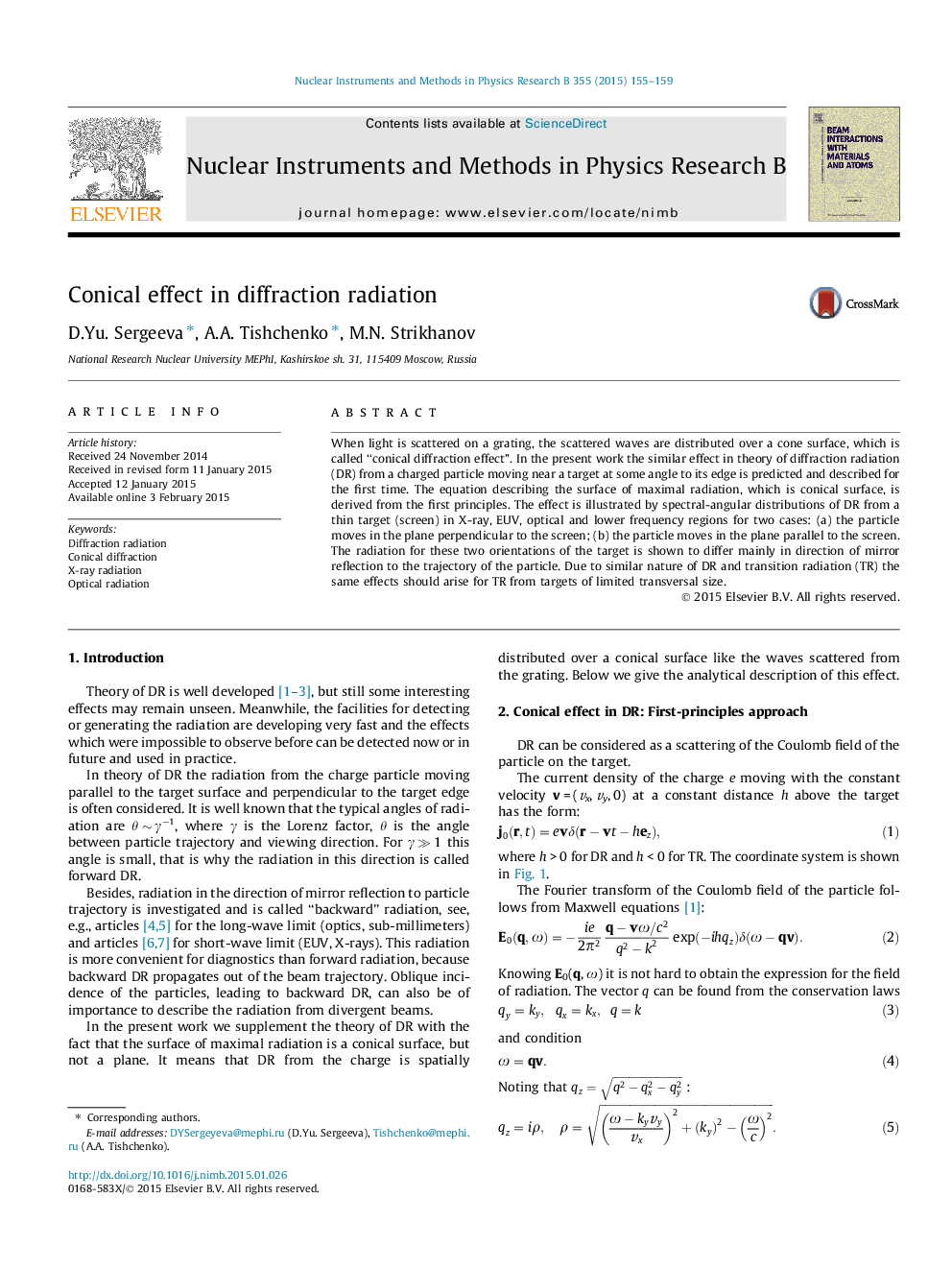| Article ID | Journal | Published Year | Pages | File Type |
|---|---|---|---|---|
| 8040611 | Nuclear Instruments and Methods in Physics Research Section B: Beam Interactions with Materials and Atoms | 2015 | 5 Pages |
Abstract
When light is scattered on a grating, the scattered waves are distributed over a cone surface, which is called “conical diffraction effect”. In the present work the similar effect in theory of diffraction radiation (DR) from a charged particle moving near a target at some angle to its edge is predicted and described for the first time. The equation describing the surface of maximal radiation, which is conical surface, is derived from the first principles. The effect is illustrated by spectral-angular distributions of DR from a thin target (screen) in X-ray, EUV, optical and lower frequency regions for two cases: (a) the particle moves in the plane perpendicular to the screen; (b) the particle moves in the plane parallel to the screen. The radiation for these two orientations of the target is shown to differ mainly in direction of mirror reflection to the trajectory of the particle. Due to similar nature of DR and transition radiation (TR) the same effects should arise for TR from targets of limited transversal size.
Related Topics
Physical Sciences and Engineering
Materials Science
Surfaces, Coatings and Films
Authors
D.Yu. Sergeeva, A.A. Tishchenko, M.N. Strikhanov,
